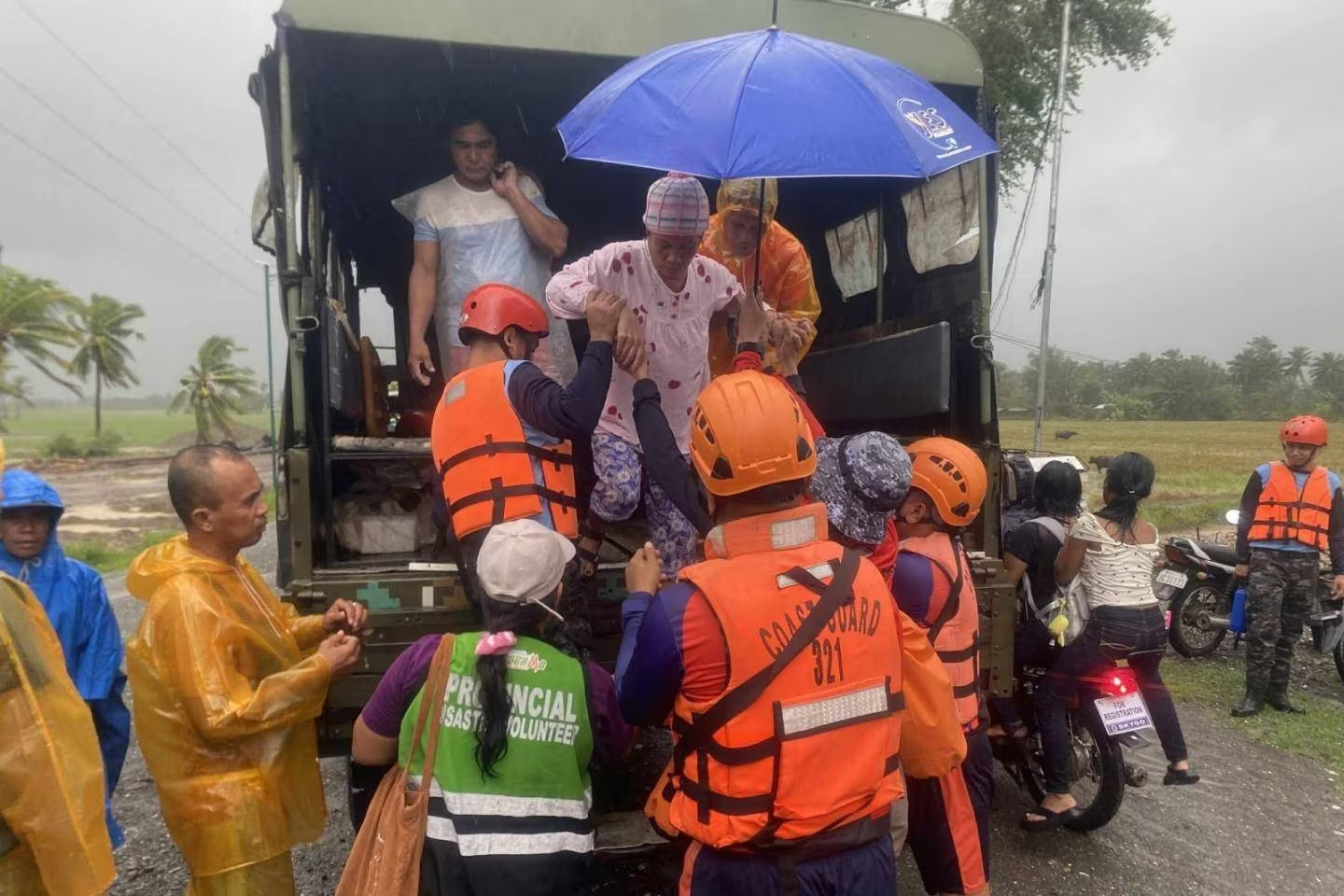The Immediate Aftermath: Assessing the Human Cost of Typhoon Fung-wong
Typhoon Fung-wong, internationally known by its name Kalmaegi, finally tracked away from the northwestern Philippines, leaving behind a trail of devastation that underscored the region’s extreme vulnerability to powerful tropical cyclones. Official reports confirmed that the storm resulted in the deaths of at least eight people and severely impacted infrastructure across several provinces. Crucially, the storm’s heavy rainfall and subsequent flooding led to the displacement of an estimated 1.4 million people who were forced to flee their homes.
The massive scale of displacement required immediate and extensive government intervention, highlighting the challenge of managing humanitarian crises in the wake of severe weather events in the archipelago nation.

Physical Damage and Infrastructure Collapse
Fung-wong’s slow movement across the main island of Luzon maximized the duration of heavy rainfall, triggering widespread floods and deadly landslides. The storm’s impact was felt most acutely in the northern provinces, where essential services were severely compromised.
Key damages reported included:
- Widespread Power Outages: Entire provinces experienced blackouts as high winds downed power lines and damaged electrical infrastructure.
- Transportation Disruption: Major roads and bridges were rendered impassable due to flooding or debris, isolating affected communities and hindering immediate relief efforts.
- Agricultural Losses: Vast tracts of farmland, particularly rice paddies, were submerged, leading to significant losses for local farmers and raising concerns about food security.
- Structural Damage: Hundreds of homes, especially those built near coastlines or riverbanks, suffered partial or total destruction from wind and water damage.
While the storm’s intensity was not as catastrophic as some previous cyclones, the sheer volume of water it dumped across already saturated ground proved devastating, particularly in low-lying and coastal areas.
Government Response and Evacuation Efforts
In anticipation of the typhoon, Philippine disaster management agencies initiated large-scale, mandatory evacuations. This proactive measure is credited with preventing a potentially higher casualty count, given the massive number of people affected.
Relief operations commenced immediately after the typhoon moved out of the area, focusing on providing essential aid to the displaced population housed in temporary shelters, primarily schools and community centers.
“Our immediate priority is ensuring food, water, and medical assistance reaches the 1.4 million affected individuals,” stated a spokesperson for the National Disaster Risk Reduction and Management Council (NDRRMC) at the time. “The coordination between local government units and national agencies has been critical in managing the logistics of this massive relief effort.”

The Storm’s Trajectory: Heading Toward Taiwan
After exiting the Philippine Area of Responsibility, Typhoon Fung-wong continued its path northwestward. The storm was forecast to track directly toward Taiwan, prompting immediate preparations and alerts across the island nation.
Meteorological agencies projected that Fung-wong would maintain significant strength as it approached Taiwan, bringing the potential for heavy rainfall, strong winds, and coastal flooding to the southern and eastern regions of the island.
This typical westward trajectory underscores the interconnected nature of weather systems in the Western Pacific, where typhoons frequently impact multiple countries in quick succession, requiring regional coordination for disaster preparedness.
Context: The Philippines and the Pacific Typhoon Belt
The Philippines sits squarely within the Pacific Typhoon Belt, making it one of the most frequently hit countries by tropical cyclones globally. On average, the country experiences about 20 storms annually, with several making landfall.
Fung-wong serves as a stark reminder of the ongoing threat posed by these powerful weather systems. While the casualty toll of 8 was relatively low compared to mega-disasters like Typhoon Haiyan (Yolanda) in 2013, which killed over 6,300 people, the displacement figure of 1.4 million highlights the immense societal disruption caused even by moderate-to-strong typhoons.
Experts consistently emphasize the need for continued investment in resilient infrastructure, improved early warning systems, and comprehensive climate adaptation strategies to mitigate the recurring economic and human costs of these storms.
Key Challenges in Post-Typhoon Recovery
Recovery efforts in the Philippines following major storms face several persistent challenges:
- Housing Reconstruction: Rebuilding durable, typhoon-resistant housing for displaced families, particularly in vulnerable coastal areas.
- Livelihood Restoration: Providing support and capital for farmers and fishermen whose primary sources of income were destroyed.
- Infrastructure Resilience: Hardening power grids, communication networks, and transportation links against future severe weather events.
- Long-term Mental Health Support: Addressing the psychological trauma experienced by communities that repeatedly face displacement and loss.

Key Takeaways
- Casualty Count: At least eight people were confirmed killed in the northwestern Philippines due to Typhoon Fung-wong.
- Mass Displacement: The storm forced the evacuation and displacement of approximately 1.4 million people.
- Primary Damage: Extensive flooding, landslides, and widespread power outages were the primary impacts.
- Storm Status: Fung-wong moved out of the Philippine Area of Responsibility and was tracking toward Taiwan.
- Context: The event underscores the continuous need for robust disaster preparedness and climate resilience strategies in the Philippines, a nation highly exposed to the Pacific Typhoon Belt.
Conclusion
Typhoon Fung-wong delivered a powerful blow to the Philippines, demonstrating once again the profound human and economic toll that tropical cyclones exact on the region. While the immediate focus shifted to humanitarian relief for the 1.4 million people affected, the long-term challenge remains: building a more resilient nation capable of withstanding the increasing frequency and intensity of these natural hazards. The rapid response and mandatory evacuations saved lives, but the sheer scale of the displacement serves as a critical reminder of the ongoing vulnerability faced by communities in the path of the world’s most powerful storms.
Original author: Jim Gomez
Originally published: November 10, 2025
Editorial note: Our team reviewed and enhanced this coverage with AI-assisted tools and human editing to add helpful context while preserving verified facts and quotations from the original source.
We encourage you to consult the publisher above for the complete report and to reach out if you spot inaccuracies or compliance concerns.

